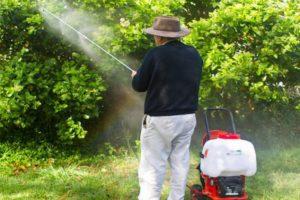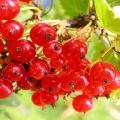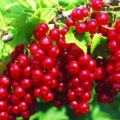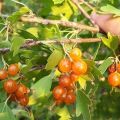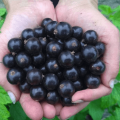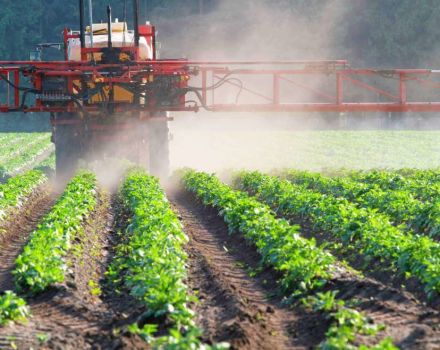Description of red currant varieties Marmeladnitsa, planting and care
Red currant bushes are grown by gardeners for sour berries and for decorative purposes. One of the common varieties of currants is Marmalade with a high content of pectin, a gelling component.
Breeding history and region of growth
The variety was bred in the 90s of the last century by crossing the Maarsis Promenent and Rote Spetlese varieties. The author of the variety is L. V. Bayanova, who strove to obtain a berry that is ideal for making marmalade and jelly products. In 1997, the currant Marmalade was included in the official State Register of Agricultural Crops.
This variety should be grown in regions with warm and temperate climates. Favorable conditions favor active growth and abundant fruiting.
Description and characteristics of the Marmalade
Having planned the planting of currants and considering the Marmeladnitsa variety as one of the options, you should familiarize yourself with a detailed description of the culture. The variety has a number of distinctive characteristics.
Bush and berries
The berries grow on thickened semi-sprawling bushes. The plantings are medium-sized, with straight, powerful shoots and light pubescence. The buds are distinguished by pointed tips that slope away from the shoot. The five-lobed leaves of a deep green color have a shiny surface and a pubescent back.
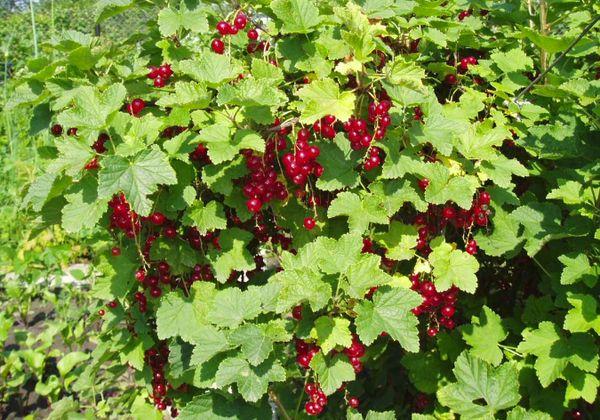
Red currant clusters reach a length of 8 cm and are evenly distributed on branches. Small berries weighing up to 1 g are valued for their dense pulp, pleasant sour taste and a large number of useful properties. The crop is most often used for making jam, preserves and marmalade. Also berries are suitable for fresh consumption and freezing.
Disease and insect resistance
A variety of currant Marmalade is resistant to kidney mites and other common pests. Of the parasites for berries, only aphids are dangerous, which infects plants under adverse environmental conditions and violation of the rules of care. The culture has an increased immunity to powdery mildew, anthracnose and septoria.
Resistance to freezing temperatures and droughts
Currant Marmalade tolerates low temperatures well without the risk of loss of marketable appearance and deterioration of taste. The indicator of drought resistance in berry crops is average, and the bushes also tolerate hot weather normally.

Advantages and disadvantages: is it worth planting?
Thinking about planting the Marmeladnitsa variety, it is advisable to compare all the advantages and disadvantages in order to make a final decision. The main advantages of the variety include:
- The benefits of using. The berries contain a large amount of pectin and vitamin C.
- Variability in the use of the crop. The fruits are suitable for processing, freezing, storage and fresh consumption.
- High yield rate. When grown in private garden plots and on an industrial scale, the bushes bear fruit consistently in large volumes.
- Unpretentious care. The variety does not require specific care; ripening fruits do not crumble.
- Resistance to external factors. Currant Marmalade is immune to diseases, pests, temperature extremes and drought.

The main disadvantage is the tendency of the berries to shrink if not properly cared for. Also, the disadvantages are exactingness to the composition of the soil mixture and abundant growth on the bushes, which creates difficulties for inexperienced gardeners.
Planting currants
Planting seedlings in a permanent place of growth requires preparatory work and adherence to a certain technology. In order for the currant bushes to actively develop and bear fruit, it is important to find a suitable place, take into account the planting time, prepare the soil and seedling.
Determining the place
Too high temperatures and direct exposure to sunlight adversely affect the growth of the bushes. For the Marmeladnitsa variety, it is recommended to choose a semi-shaded place where the plantings will be in comfortable conditions. The correct choice of location prevents leaves from falling, drying of shoots and shrinking of berries. In this case, strong shading should be avoided so that the plants are not exposed to fungal infections.
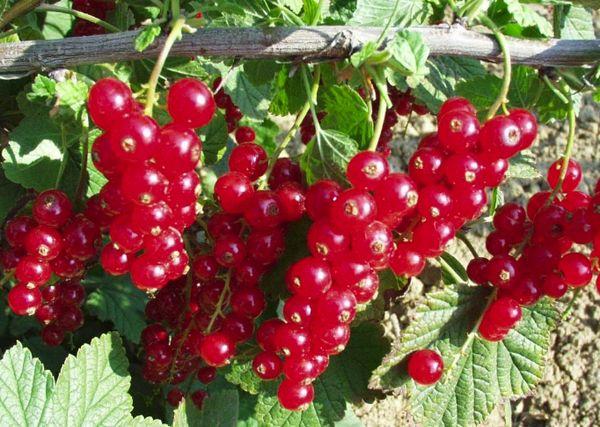
Optimal timing
The most suitable time for planting currants is the second half of autumn, when sap flow stops in the shoots. In the middle lane, the Marmalade variety is planted in the last days of October or at the beginning of November. On the territory of the southern regions, it is allowed to postpone disembarkation to mid-November.
In northern regions with extreme lowering temperatures, it is better to plant currants in spring so that the seedlings have time to adapt to new conditions.
Cooking the plot and beds
For the full development of plantations, currants should be planted in fertile soil. For this purpose, preliminary preparation of the site is performed. 3-4 weeks before the transfer of seedlings to a permanent place, the beds are treated with rotted compost, nitroammophos and wood ash.
After fertilization, the soil is carefully dug up or loosened. If it is not possible to perform preliminary preparation, additional fertilizing should be added directly during the planting of seedlings. In this case, the excavated soil from the planting hole is mixed with potassium chloride, superphosphate and compost. The resulting mixture is used for sprinkling seedlings.

Sapling planting technology
To avoid common mistakes, you should follow the step-by-step instructions. The planting process requires the following steps:
- Dig a planting hole with standard dimensions of 50 x 50 cm. It is recommended to prepare the hole a few weeks before planting.
- Mix the fertile soil layer with organic fertilizers.
- Place the currant seedling in the central part of the hole and spread the roots so that their bases do not bend up.The root collar should remain 6 cm below ground level.
- The seedling is covered with earth, the top layer is slightly tamped and abundant watering is carried out.
- The area around the seedlings is covered with a layer of mulch. Straw, humus, peat, sawdust, coniferous branches can be used as material for processing.
- The top of the plant is cut, leaving no more than 4 buds on the seedlings.
How to properly care for the variety
Comprehensive care of the berry crop involves regular watering of the bushes, the use of nutrient fertilizers, crown formation, and protection from frost. The quality of the crop, the taste characteristics of berries and the general condition of the plants largely depend on the timeliness and correctness of these procedures.

We organize competent watering
Currant Marmalade when grown in temperate climates has enough natural precipitation. Additional moistening of the soil should be carried out in conditions of severe drought. It is also recommended to water the bushes during the period of intense fruiting. Irrigation is carried out in the evening, after sunset, spending 20-30 liters of water for each bush.
For the convenience of watering plants, you can build a drip irrigation system. To retain moisture in the soil, the trunk circle is covered with a layer of mulch.
We carry out formative pruning
It is better to form the crown in the spring, before bud break. In the first year of development of seedlings, 5-7 developed shoots are left on them. In the second and subsequent year, 5 annual and more adult shoots are left, and the rest are removed. Also, too old, affected and dried branches are subject to pruning. In the summer, pinching of young shoots is performed to stimulate the formation of replacement shoots.

Nutrient introduction
During the growing season, it is required to fertilize the currants several times. The Marmalade variety needs the following fertilizers:
- in early spring, plants are watered with a urea solution;
- during the period of active flowering, the roots are watered with a mixture of water and poultry droppings, and the ground part is sprayed with potassium permanganate;
- in the fall, the bushes are fed with rotted manure or compost.
Shelter bushes for the winter
When grown in northern regions for the winter, the bushes are protected with a covering material. On top of the plants put on a dense fabric, burlap or opaque plastic wrap. It is also allowed to provide natural shelter for the plant. To do this, it is necessary to incline the branches to the ground so that they are under the snow cover. The branches are fixed on the soil surface using weights, which are recommended to use logs or boards.
Reviews of gardeners about Marmeladnitsa
Galina, 36 years old: “They choose this variety for making jam. Berries like the taste due to their pleasant sourness. We didn’t have to face care problems ”.
Lidia Vasilievna, 58 years old: “This is not the first season I have grown the Marmeladnitsa variety. The harvest is consistently large, the fruits are juicy. Last year, I noticed aphids on the bushes, I had to spray the beds with insecticides. The invasion of pests did not affect the taste and quantity of the harvest. "
